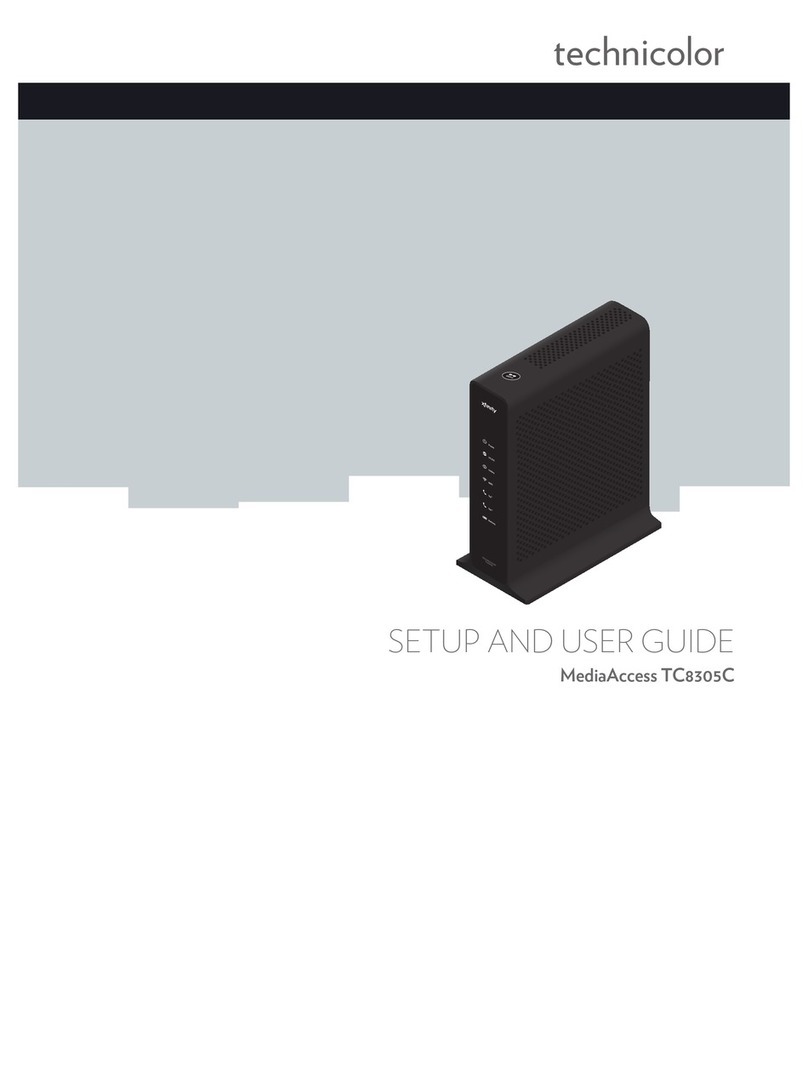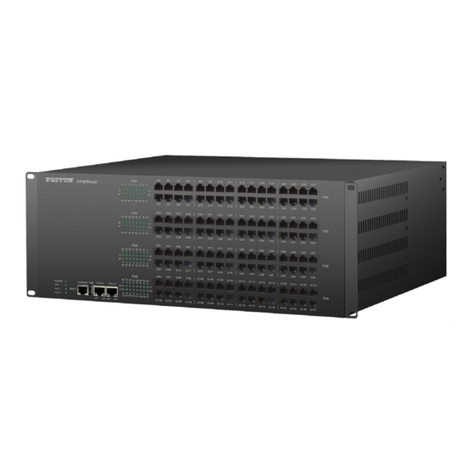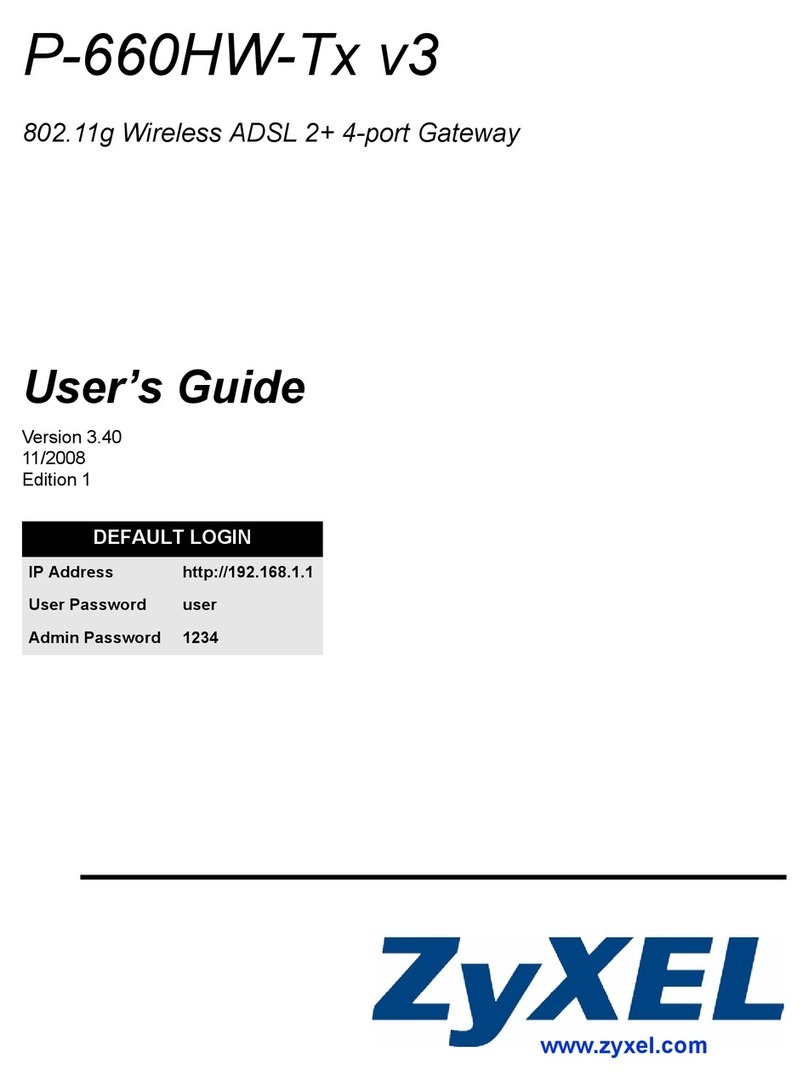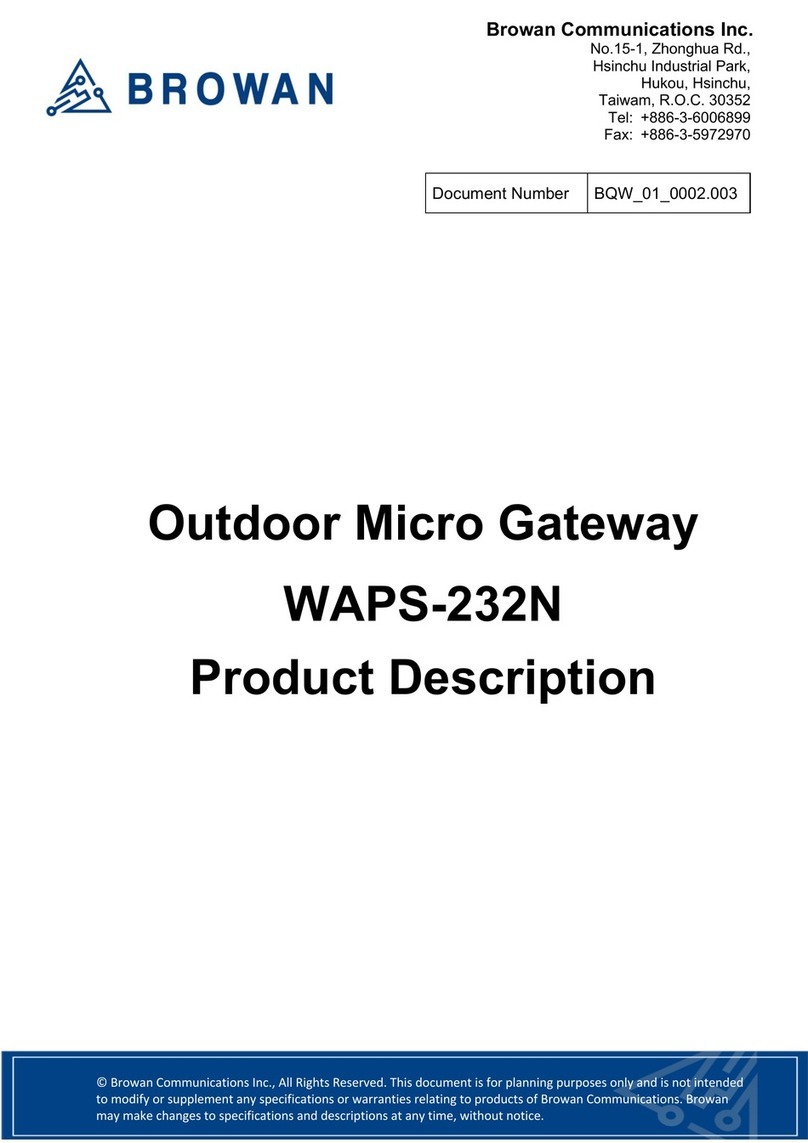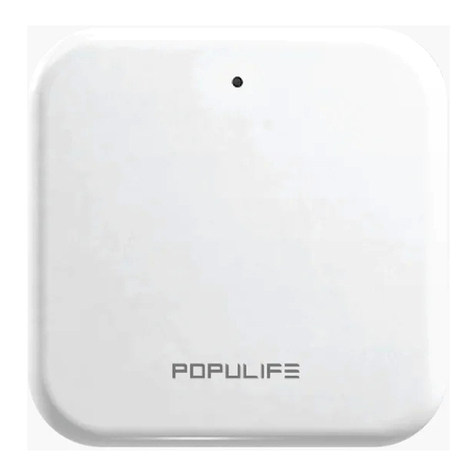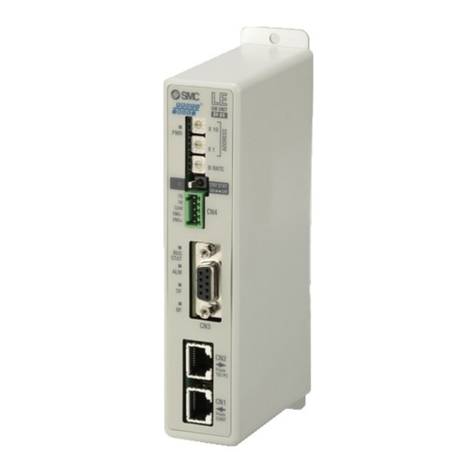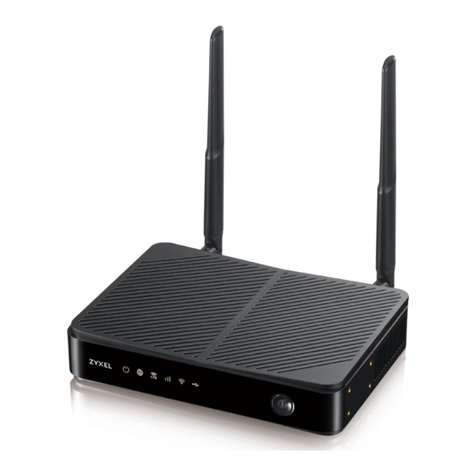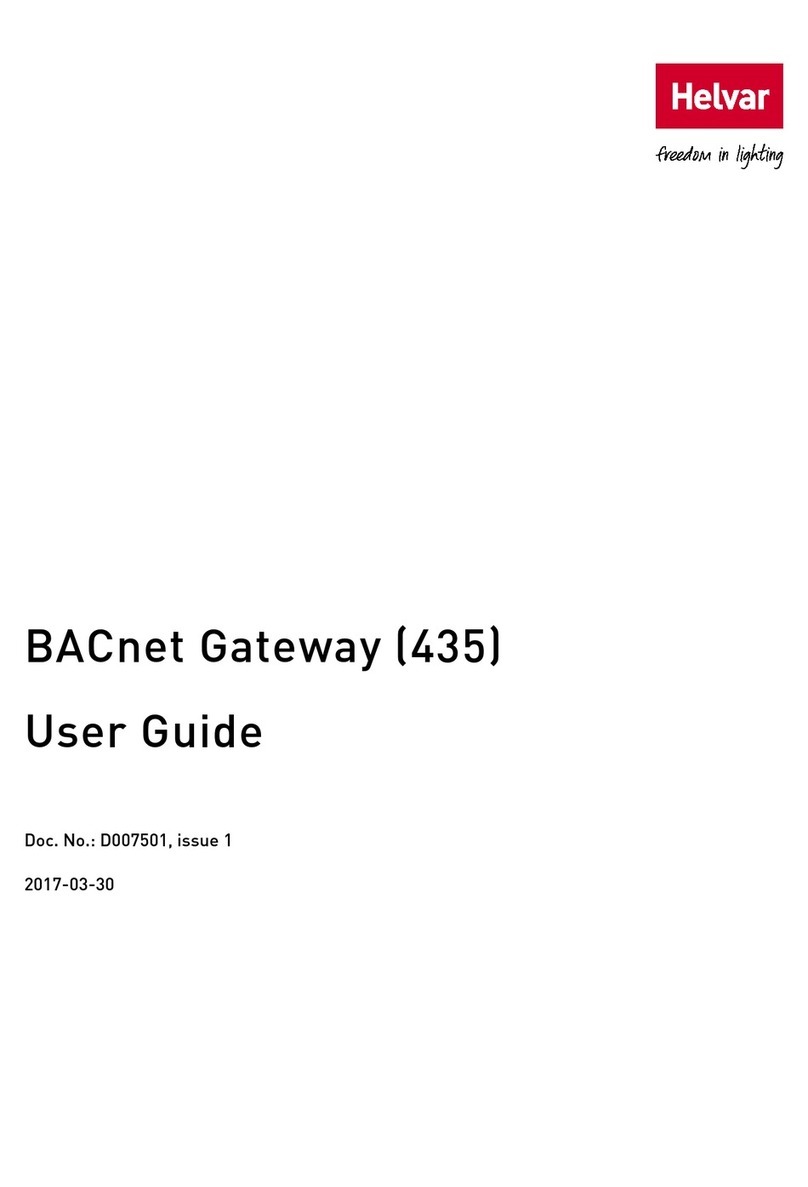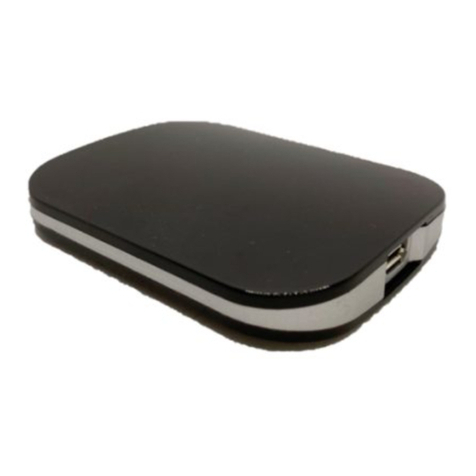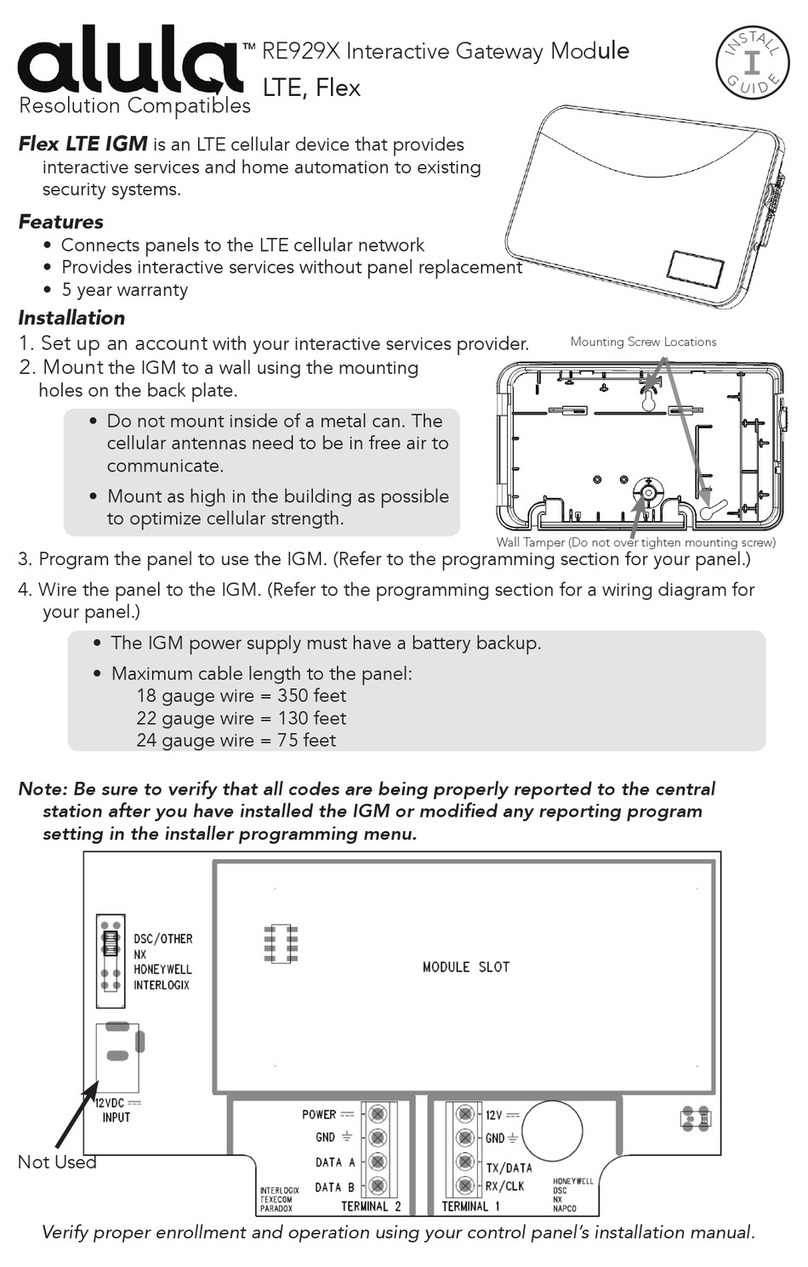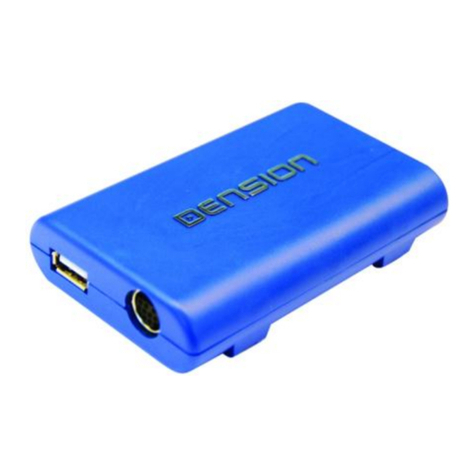Essence Technology EAG Series Instruction Manual

EAG Gateway Series Administration Guidelines
Version
Essence ®
Technology

1/5/2007 EAG Gateway Series Administration Guidelines MAG-06007 Rev. A
TABLE OF CONTENTS
1Introduction.......................................................................................................................................1
1.1 Overview.......................................................................................................................1
1.2 Features........................................................................................................................1
1.3 Hardware Platform........................................................................................................2
1.3.1 Physical................................................................................................................2
1.3.2 System Specifications ..........................................................................................3
2Console and Interface Modules........................................................................................................5
2.1 Main Console Module...................................................................................................5
2.1.1 Ethernet Port........................................................................................................6
2.1.2 Console Port.........................................................................................................6
2.1.3 LED Definitions.....................................................................................................7
2.2 FXS Line Interface Module ...........................................................................................8
2.2.1 FXS Line Interface Module Function....................................................................8
2.2.2 FXS Line Interface Module PinAssignment.........................................................8
2.3 FXO Line Interface Module.........................................................................................10
2.3.1 FXO Line Interface Module Function .................................................................10
2.3.2 FXO Line Interface Module PinAssignment ......................................................10
2.4 FXS/FXO Mixed Line Interface Module......................................................................13
2.5 Switching Power Supply Module.................................................................................15
3Preparation for Installation..............................................................................................................17
3.1 Safety Check...............................................................................................................17
3.2 Installation Environment..............................................................................................17
3.2.1 Temperature/Humidity........................................................................................17
3.2.2 Dust Control and Air Flow...................................................................................17
3.2.3 Interference and Lighting Hazard.......................................................................18
3.2.4 Installing EAG Chassis.......................................................................................18
3.3 Inspecting EAG and its accessories ...........................................................................18
4Installation.......................................................................................................................................19
4.1 Tools Required for Installation.....................................................................................19
4.2 Installing the Main Control Module..............................................................................19
4.3 Installing the FXS Interface Module............................................................................19
4.4 Installing the Power Supply Module............................................................................19
ii

1/5/2007 EAG Gateway Series Administration Guidelines MAG-06007 Rev. A
4.5 Installing EAG onto a Standard Shelf..........................................................................20
4.6 Installing Cables..........................................................................................................20
4.6.1 Connecting Console Port ...................................................................................20
4.6.2 Connecting Ethernet Port...................................................................................21
4.6.3 Connecting FXS Cable.......................................................................................23
4.7 Connecting Power Supply...........................................................................................23
4.8 Final Checks after Installation.....................................................................................24
5System Configuration.....................................................................................................................25
5.1 Login ...........................................................................................................................25
5.2 Menu Structure and Function Description of Most Used Buttons...............................26
5.3 System Config.............................................................................................................28
5.4 Network Configuration ................................................................................................30
5.5 MGCP Config..............................................................................................................32
5.6 SIP Configuration........................................................................................................35
5.7 1st/2nd Card..................................................................................................................37
5.7.1 Phone Number...................................................................................................37
5.7.2 Call State Info.....................................................................................................38
5.7.3 FXS (1~24).........................................................................................................39
5.8 Advanced Config.........................................................................................................42
5.8.1 Digit Map ............................................................................................................42
5.8.2 Routing Map.......................................................................................................43
5.8.3 Feature Code .....................................................................................................47
5.8.4 System Config....................................................................................................51
5.8.5 FXO Config.........................................................................................................55
5.8.6 FXS Config.........................................................................................................57
5.8.7 IP Config.............................................................................................................58
5.8.8 SIP Config ..........................................................................................................63
5.8.9 MGCP Config .....................................................................................................66
5.8.10 Border Proxy Configuration................................................................................67
5.8.11 EMS Configuration.............................................................................................68
5.9 Log Info.......................................................................................................................69
5.9.1 Resource Info.....................................................................................................69
5.9.2 Message Log......................................................................................................71
iii

1/5/2007 EAG Gateway Series Administration Guidelines MAG-06007 Rev. A
5.9.3 Error Info Log .....................................................................................................71
5.9.4 Startup Info.........................................................................................................71
5.10 System Tools...............................................................................................................72
5.10.1 Factory Config....................................................................................................72
5.10.2 Software Update.................................................................................................72
5.10.3 Change Password..............................................................................................73
5.10.4 Reboot the Gateway...........................................................................................74
5.10.5 Help....................................................................................................................74
5.11 Exit ..............................................................................................................................74
6Appendix.........................................................................................................................................75
6.1 Factory Default Settings..............................................................................................75
6.1.1 System Settings .................................................................................................75
6.1.2 Network Settings................................................................................................75
6.1.3 MGCP Settings...................................................................................................76
6.1.4 SIP Config ..........................................................................................................77
6.1.5 1st/2nd Card .........................................................................................................77
6.1.6 Advanced Config................................................................................................78
6.1.7 Log Information ..................................................................................................83
6.1.8 System Tools......................................................................................................83
6.2 Glossary......................................................................................................................83
iv

1/5/2007 EAG Gateway Series Administration Guidelines MAG-06007 Rev. A
1 Introduction
1.1 Overview
EAG VoIP gateway (EAG for short) is a multiple purpose and modular VoIP equipment based on
Essence’s next generation advanced MicroXchange architecture. EAG provides an ideal solution for
voice and fax transmission over the IP networks.
EAG is designed for carriers and enterprises for regular phone service, fax service and PBX service. It
can be used as a part of the cost effective IP PBX solutions. EAG supports many VoIP standard
protocols and voice codec. It provides effective solutions to many technical challenges that include
echo cancellation, firewall/NAT traversal, and billing call record collection. Compared to other products
on the market, EAG has the advantage of carrier reliability, flexible configuration, high voice quality,
excellent protocol compatibility, and low cost. Its high efficient hardware and software design and
powerful DSP processing power guarantee the EAG capability of full load voice and signaling
processing and IP packetization. Its redundant load sharing power supplies and hot swappable
modules further secures the EAG’s carrier reliability.
EAG provides FXS/FXO ports and multiple 10/100M Ethernet interfaces. EAG connects to regular
telephones, faxes and PBXs through the FXS/FXO analog interfaces. It connects to IPnetwork through
Ethernet interfaces. EAG provides real-time and high quality IP-based voice services.
1.2 Features
EAG has the following unique features:
Flexible Configuration
EAG uses compact modular slot chassis design. Users can configure the EAG with interface cards of
different types and capacities.
Carrier Reliability and Easy Maintenance
EAG hardware is designed to reach the high MBTF (Mean Time between Failure). To satisfy the carrier
reliability requirement for voice gateways, EAG has the option of load sharing power module. Should
one power module fail to function, the other power module resumes the full power function. Every
hardware module in the EAG is hot swappable for in-service maintenance.
Support of FTP file Transfer and Telnet Remote Configuration
Supported Protocols and Advanced Technologies
EAG supports MGCP、SIP、RTP、TFTP、HTTP、SNMP、DHCP、and STUN protocols. It also supports
G.711、G.729A、G.723.1, iLBC, and GSM codec; G.165 and G.168 echo cancellation; RFC2833 DTMF
relay; and T.38 and T.30 IP fax relay technologies.
1

1/5/2007 EAG Gateway Series Administration Guidelines MAG-06007 Rev. A
Support of Variety of End-User Devices
EAG supports analog telephones, faxes, and PBX devices.
Interoperability
EAG has completed the interoperability tests with soft switches and gateways from more than ten
telecommunication equipment manufacturers worldwide.
1.3 Hardware Platform
1.3.1 Physical
Figure 1. EAG Front View
①
One hot swappable main control module. The main
module supports three 10/100M Ethernet ports for IP
network and one console port (CON).
Two hot swappable slots that can be configured with
different interface cards.
②& ③
All the Essence VOIP products offer modular, versatile, and high reliability features. EAG provides not
only the pure FXS (S port) and pure FXO (O port) line interface module but also mixed FXS/FXO line
interface module such as 4FXS/4FXO ( 4S/4) and 8FXS/8FXO ( 8S/8).
Both ②and ③slots can support 16S, 24S, 4FXO, 8FXO, 16FXO, 4S/4, and 8S/8 interface line
module. Users can configure the EAG gateway with different configurations by selecting different line
interface modules. The following table lists the most common configurations used by existing
customers:
Table 1. EAG Interface Slot Configuration Options
Interface
Type Card Type Slot ②Slot ③Life-Line PSTN Fallback DS0s
EAG-16S FXS-16 No 16
EAG-24S FXS-24 No 24
Analog
EAG-8O
2

1/5/2007 EAG Gateway Series Administration Guidelines MAG-06007 Rev. A
EAG-16O
EAG-8O8S FXS-8/FXO-8 Power failure and IP
degradation fallback 16
EAG-4O24
S FXS-24 No 24
Figure 2. EAG Rear View
①Two Fan Modules.
Two hot swappable power supply modules for
redundancy (optional).
②& ③
1.3.2 System Specifications
Internal Memory 32MB/64MB/128MB (Standard 64MB)
Flash Memory 8MB/16MB (Standard 8MB)
–24 voltage
Talk Battery
Ringing Voltage 60V RMS
REN Equivalence 5 for short loop (300 meters), 3 for long loop (1500 meters)
Loop Current = or > 21 mA
Power Surge Voltage 1000 Votage (10/100uS)
Max Line Length 1500 m
Off-hook Detection Loop Start
Dialing DTMF
Input Voltage 100~240 Volt
Input Current 0.7Amp (110 Volt) /0.35Amp (220 Volt)
Power Consumption 75Watt (Max)
Operation Temperature 0 ~ 40°C
3

1/5/2007 EAG Gateway Series Administration Guidelines MAG-06007 Rev. A
Non Operation Temperature -25 ~ 70°C
Operation Humidity 5 ~ 95% (Non Condensed)
Noise 30 DB (Max)
Dimension (H×L×W) 4.4x44x44 mm
Net Weight 7 kg
Weight (including package) 9kg
4

1/5/2007 EAG Gateway Series Administration Guidelines MAG-06007 Rev. A
2 Console and Interface Modules
EAG is designed based on modular architecture. The detailed functions of the interface modules are
described in the following sections.
2.1 Main Console Module
EAG Main Console Module uses advanced framework and technology. Its main features include: high
performance processors for management and signaling processing and DSP sub module for voice
processing. The Main Console Module provides necessary interfaces to connect to peripheral devices
and internal interface modules. It can supports up to 48 analog line/trunk ports.
Figure 3. EAG Main Console Module Physical View
①& ⑨Main Console Module Thumb Screw ②Ethernet Port (0)
③Ethernet Port (1) ④Ethernet Port(2)
⑤Console Port (CON) ⑥Power LED
⑦Alarm LED ⑧Status LED
EAG modules are hot swappable for easy service and maintenance. For example: users can pull the
main console module out for service by pulling the thumb screws on the module. The thumb screws
are indicated by ①and ⑨on the Figure 2-1.
Note: The main console module can be secured by turning the screw clockwise. Turn screws the other
5

1/5/2007 EAG Gateway Series Administration Guidelines MAG-06007 Rev. A
way to pull the main console module out.
2.1.1 Ethernet Port
There are three 10/100M Ethernet ports on the EAG main console module. The connector type of the
Ethernet ports is RJ45 with status LED. Table 2-2 shows the pin assignment of those Ethernet
connectors and LED status specification.
Pin LED
1 2 3 6 Yellow Green
TX+ TX- RX+ RX- Connected Live
Ethernet Port (1): for console/management/maintenance use
Ethernet Port (2): reserved for future use.
Ethernet Port (3): Ethernet port to connect to the IP network. This port is used for all the VoIP activities
that include SIP and MGCP signaling protocol and RTP packets transmission. This port can also be
used for control/management/maintenance.
Note: If possible, customers should use the Ethernet port 1 for software upgrade, device configuration,
and management operations and use the Ethernet port 3 for VoIP protocol and data
transmissions.
2.1.2 Console Port
EAG supports configuration through a console port (CON) of RJ45 connector type. Table2-3 shows the
connector interface scheme of RJ45 to DB9 and DB25.
Table 2. Console Port Pin Assignment of RJ45 to DB9 and DB25
RJ45 Connector Pin No. 1 2 3 4 5 6 7 8
Pin Description NC NC TXD GND GND RXD NC NC
DB9 Connector Pin No. 2 5 3
DB25 Connector Pin No. 3 7 2
The console port is used for local management and testing. Computers can be connected to EAG by
linking the RS232 port to EAG console port. EAG uses three wires on the console port: one TXD
(send), one RXD (receive), and one GND (ground).
EAG is shipped with a standard RJ45 to DB9 adapter.
Table 3. Console Port Specification
6

1/5/2007 EAG Gateway Series Administration Guidelines MAG-06007 Rev. A
Attribute Description
Connector Type RJ45
Port Number 1
Interface Type RS232
Baud Rate 115200
Data Bits 8
Parity Check No
Stop Bit 1
Flow Control No
2.1.3 LED Definitions
There are three LED indicators on the front panel of the EAG main console module: power, alarm, and
status.Table2-4 show the LED types and definitions.
Table 4. Main Console Module LED Definitions
Mark Function State Description
Green Main power supply is on.PWR Power
Indicator Off Main power supply is off.
Off System is locked in a non functional state.
Flashing Green Normal.
Red System is in the start up mode, not ready for
operation.
STU Status
Indicator
Flashing Red System is in the diagnostic mode with limited
operation capability.
Green Clear of all alarms
Flashing Red New alarm condition from an unknown source.
ALM Alarm
Indicator
Red Alarm with identified source.
7

1/5/2007 EAG Gateway Series Administration Guidelines MAG-06007 Rev. A
2.2 FXS Line Interface Module
Figure 4. FXS Interface Module Physical View
2.2.1 FXS Line Interface Module Function
EAG FXS interface module provides the interface to analog phones, faxes, modem, and PBX.
It can be used with FXS/FXO Mixed Line Interface Module to meet the different configuration
requirements. The common combinations are described in Table 1.
2.2.2 FXS Line Interface Module Pin Assignment
Each EAG FXS interface module provides up to 24 ports. Each EAG can have up to two FXS interface
modules, 48 analog ports. FXS interface module provides 50 pin CHAMP connector. Table2-5 shows
the scheme of the 50 pin CHAMP connector. EAG supports two configurations of the FXS interface
module:16 port FXS module (16S) and 24 port FXS module (24S) .On the 16S interface module, the
pins from 17 to 24 are not used.
Pin Description Pin
1 RING1 TIP1 26
2 RING2 TIP2 27
3 RING3 TIP3 28
4 RING4 TIP4 29
8

1/5/2007 EAG Gateway Series Administration Guidelines MAG-06007 Rev. A
5 RING5 TIP5 30
6 RING6 TIP6 31
7 RING7 TIP7 32
8 RING8 TIP8 33
9 RING9 TIP9 34
10 RING10 TIP10 35
11 RING11 TIP11 36
12 RING12 TIP12 37
13 RING13 TIP13 38
14 RING14 TIP14 39
15 RING15 TIP15 40
16 RING16 TIP16 41
17 RING17 TIP17 42
18 RING18 TIP18 43
19 RING19 TIP19 44
20 RING20 TIP20 45
21 RING21 TIP21 46
22 RING22 TIP22 47
23 RING23 TIP23 48
24 RING24 TIP24 49
25 NC NC 50
9

1/5/2007 EAG Gateway Series Administration Guidelines MAG-06007 Rev. A
2.3 FXO Line Interface Module
Figure 5. 16 FXO Interface Module Physical View
2.3.1 FXO Line Interface Module Function
EAG FXO interface module provides the analog relay ports. It can be connected to PBX analog POTS
lines or telephony switch POTS lines.
It can be used with FXS/FXO Mixed Line Interface Module to meet the different configuration
requirements. The common combinations are described in Table 1.
2.3.2 FXO Line Interface Module Pin Assignment
Each EAG FXO interface module supports up to 16 analog relay ports. FXS interface module provides
50 pin CHAMP connector. Table 5 shows the scheme of the 50 pin CHAMP connector. EAG supports
three configurations of the FXS interface module:
․ 4 port FXO module shown in Table 5.
․ 8 port FXO module shown in Table 6.
․ 16 port FXO module shown in Table 7.
On the 4FXO module, the pins from 5 to 16 are not used. On the 8FXO module, the pins from 9 to 16
are not used.
Table 5. 4FXO Interface Module Pin Assignment
Pin Description Pin
10

1/5/2007 EAG Gateway Series Administration Guidelines MAG-06007 Rev. A
1 RING1 TIP1 26
2 RING2 TIP2 27
3 RING3 TIP3 28
4 RING4 TIP4 29
5 NC NC 30
6 NC NC 31
7 NC NC 32
8 NC NC 33
9 NC NC 34
10 NC NC 35
11 NC NC 36
12 NC NC 37
13 NC NC 38
14 NC NC 39
15 NC NC 40
16 NC NC 41
Table 6. 8FXO Interface Module Pin Assignment
Pin Description Pin
1 RING1 TIP1 26
2 RING2 TIP2 27
3 RING3 TIP3 28
4 RING4 TIP4 29
5 RING5 TIP5 30
6 RING6 TIP6 31
7 RING7 TIP7 32
8 RING8 TIP8 33
9 NC NC 34
10 NC NC 35
11 NC NC 36
12 NC NC 37
13 NC NC 38
11

1/5/2007 EAG Gateway Series Administration Guidelines MAG-06007 Rev. A
14 NC NC 39
15 NC NC 40
16 NC NC 41
Table 7. 16FXO Interface Module PinAssignment
Pin Description Pin
1 RING1 TIP1 26
2 RING2 TIP2 27
3 RING3 TIP3 28
4 RING4 TIP4 29
5 RING5 TIP5 30
6 RING6 TIP6 31
7 RING7 TIP7 32
8 RING8 TIP8 33
9 RING9 TIP9 34
10 RING10 TIP10 35
11 RING11 TIP11 36
12 RING12 TIP12 37
13 RING13 TIP13 38
14 RING14 TIP14 39
15 RING15 TIP15 40
16 RING16 TIP16 41
12

1/5/2007 EAG Gateway Series Administration Guidelines MAG-06007 Rev. A
2.4 FXS/FXO Mixed Line Interface Module
Figure 6. 8S/8 Line Interface Module Physical View
The FXS/FXO mixed line module provides an ideal solution for enterprise and personal users to
expand their existing PSTN or PBX telecommunication systems by connecting to IP network. It offers
flexible configuration and routing capabilities to meet the different customer requirements.
The FXS/FXO mixed line module offers both the FXS and FXO interfaces on the same line card.
․ It provides the analog interfaces to connect to telephones, faxes, modems, and PBX.
․ It provides the analog relay ports. It can be connected to PBX analog POTS lines or telephony
switch POTS lines.
․ The FXO ports can be used for Life-line PSTN Fallback to increase the system stability and
reliability.
The examples are given as follows based on the 4FXS/4FXO mixed line interface module.
․ EAG with the 4S/4 has three interface types: IP, FXS, and FXO. The calls from any interface type
can be routed to any of the two other interface types.
․ EAG with the 4S/4 is equivalent to an IP-PBX. It offers the common PBX functions as well as the
IP functions.
․ EAG with the 4S/4 can be used as EAG with 4FXS or EAG with 4FXO.
․ All the Essence’s VOIP gateways with the FXS/FXO line card provide the same functions and
features. The gateways include EAG and EIG.
․ Applicable scenarios include the connections of enterprise PBXs, the connections of PBX and
VOIP, or used as IP-PBX.
Currently there are two configurations for the FXS/FXO mixed line card modules:
13

1/5/2007 EAG Gateway Series Administration Guidelines MAG-06007 Rev. A
․ 4S/4 shown in table 2-9.
․ 8S/8 shown in table 2-10.
The FXS/FXO mixed line card module can be used alone as used together with FXS Line Interface
Module. The common combinations are listed in Table 1.
Table 8. 4FXS/FXO Interface Module PinAssignment
Pin Description Pin
1 RING1 (FXO) TIP1 26
2 RING2 (FXO) TIP2 27
3 RING3 (FXO) TIP3 28
4 RING4 (FXO) TIP4 29
5 NC NC 30
6 NC NC 31
7 NC NC 32
8 NC NC 33
9 RING1 (FXS) TIP1 34
10 RING2 (FXS) TIP2 35
11 RING3 (FXS) TIP3 36
12 RING4 (FXS) TIP4 37
13 NC NC 38
14 NC NC 39
15 NC NC 40
16 NC NC 41
Table 9. 8FXS/FXO Interface Module PinAssignment
Pin Description Pin
1 RING1 (FXO) TIP1 26
2 RING2 (FXO) TIP2 27
3 RING3 (FXO) TIP3 28
4 RING4 (FXO) TIP4 29
5 RING5 (FXO) TIP5 30
6 RING6 (FXO) TIP6 31
14

1/5/2007 EAG Gateway Series Administration Guidelines MAG-06007 Rev. A
7 RING7 (FXO) TIP7 32
8 RING8 (FXO) TIP8 33
9 RING1 (FXS) TIP1 34
10 RING2 (FXS) TIP2 35
11 RING3 (FXS) TIP3 36
12 RING4 (FXS) TIP4 37
13 RING5 (FXS) TIP5 38
14 RING6 (FXS) TIP6 39
15 RING7 (FXS) TIP7 40
16 RING8 (FXS) TIP8 41
2.5 Switching Power Supply Module
Figure 7. Switching Power Supply Module Physical Diagram
The EAG switching power supply module is a high performance power supply specifically designed for
the Essence’s VOIP gateways. It has the commonAC input and multiple DC outputs. A single module
provides the ample power for a full loaded EAG system. As an option, uses can select dual redundant
power supply modules. The power module supports the load sharing operation mode.
The EAG switching power supply module inputs 100v to 240 v AC voltage and output several
independent DC voltages:
․ -70V for ringing and off-hook
․ -24V for talking battery
․ +5V for ringing SLIC
15

1/5/2007 EAG Gateway Series Administration Guidelines MAG-06007 Rev. A
․ 3.3V for logic devices
EAG switch power supply module is hot swappable. EAG can maintain normal operation when a power
module is added, removed, or exchanged in a live system.Table2-7 shows the pin assignments for DC
outputs.
Pin Description Pin
2 -70V/0.5A GND 1
4 -24V/1.5A GND 3
6 5V/1A GND 5
8 GND 7
10 3.3V/5A GND 9
16
Table of contents
Other Essence Technology Gateway manuals
Popular Gateway manuals by other brands
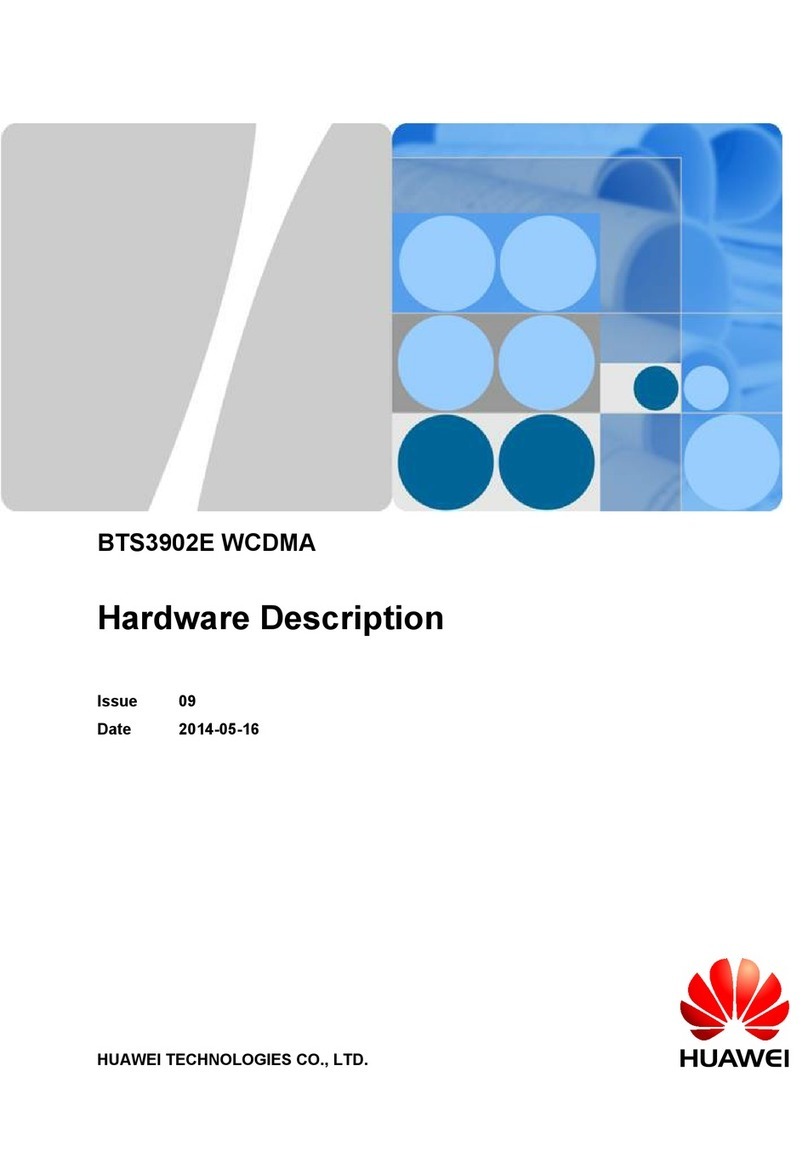
Huawei
Huawei BTS3902E WCDMA Hardware description

UfiSpace
UfiSpace S9500-22XST Hardware installation guide
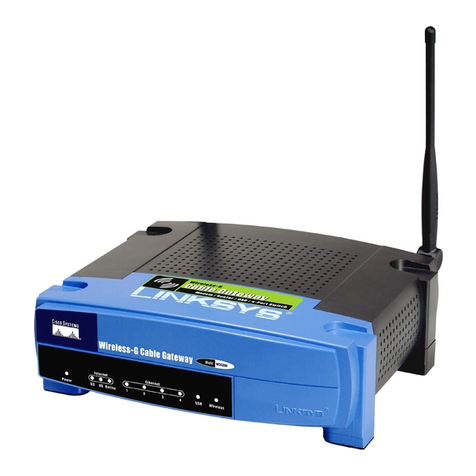
Linksys
Linksys WCG200 - Wireless-G Cable Gateway Wireless... Quick installation

Banner
Banner SureCross Performance FlexPower DX80G9M2S-P7 manual
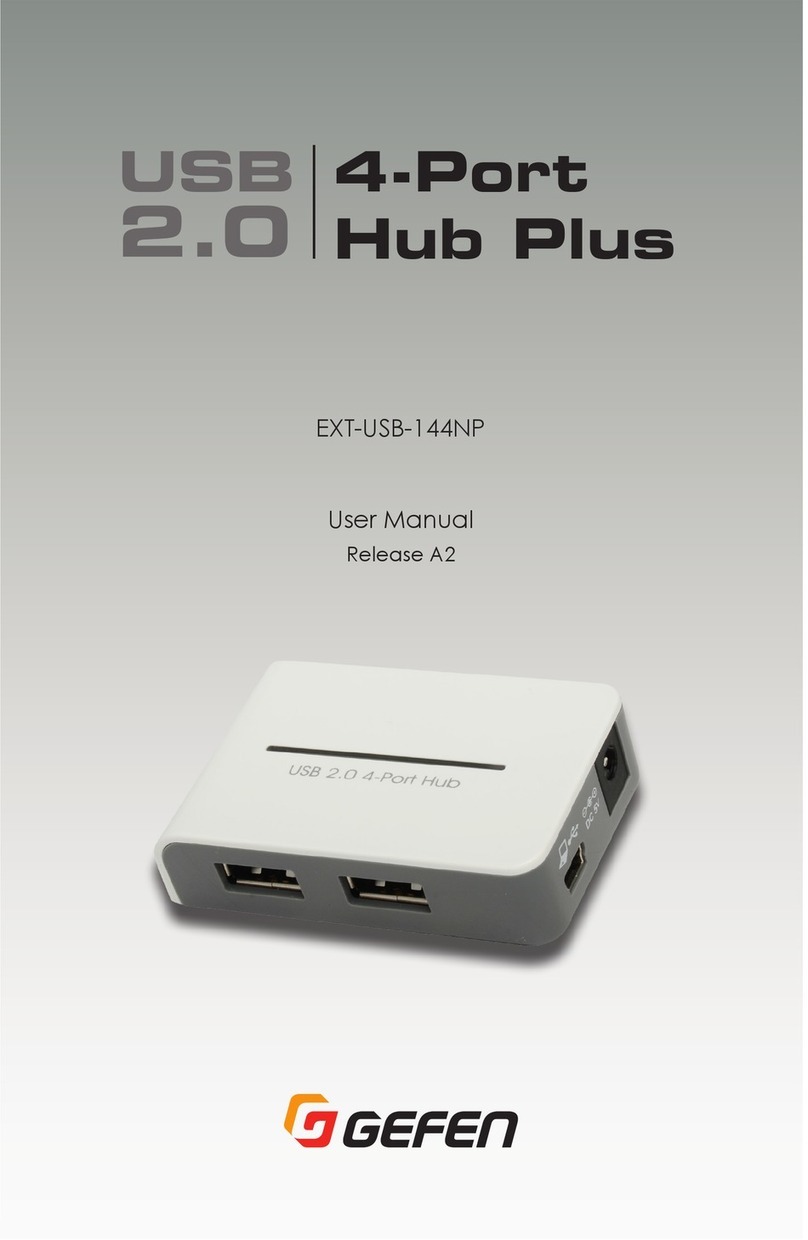
Gefen
Gefen EXT-USB-144NP user manual

Allot
Allot SG-9500 Series Hardware guide

